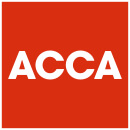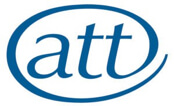The face of farming has been changing in recent years, and the pace of change is not slowing down. Farmers have had to find other sources of income other than from conventional farming to improve profits.
Changes have been initiated mainly through the progressive reduction in Basic Payment Scheme (BPS). However, through diversification, the economic viability of the farm is greatly improved, and now nearly all farmers have another source of income to that of conventional farming.
These other streams of income often use the farm’s resources. Examples of these other income streams are the letting of unused agricultural buildings, using the farm reservoir for fishing, income from solar panels and phone masts and income from the farm shop. The list is as long as the imagination.
As the business becomes more complex, so does the tax...
If the business includes more than one trade or source of income, then the profits from each source need to be determined and allocated separately to each partner.
When calculating the taxable profits, the process always starts with the profit and loss account within the annual accounts, as shown in the basic example below.
The income streams are separated, and any direct costs are allocated against them. Then the non-direct costs are allocated in an appropriate fashion. This can vary depending on the expense type. This could be on an actual basis for repairs to property, or it could be on a percentage of income basis, such as when allocating telephone expenses. Disallowable items are considered. Any tax adjustments are made, for example, for capital allowances, and then you have the taxable profits per trade.
| Farm profit allocation | ||||
| Profit per annual accounts | £100,000 | |||
| Wheat sales £ | Rental income £ | Total £ | ||
| Income | 350,000 | 50,000 | 400,000 | |
| Direct expenses | ||||
| Seed/Fertiliser/Spray | (100,000) | (100,000) | ||
| Indirect expenses | ||||
| Repairs to property | (25,000) | (10,000) | (35,000) | Actual basis |
| Telephone | (875) | (125) | (1,000) | % basis |
| Depreciation | (35,000) | (2,500) | (37,500) | Disallowable |
| Other | (123,500) | (5,000) | (128,500) | Actual basis |
| Accounting profit per trade | 65,625 | 32,375 | 100,000 | |
| Add depreciation | 35,000 | 2,500 | 37,500 | |
| Less capital allowances | (55,000) | (55,000) | ||
| Taxable profit per trade | 45,625 | 34,875 | 82,500 |
Within a partnership, the tax-adjusted partnership profits for an accounting period are allocated to the partners in accordance with the partnership agreement and reported onto the partnership tax return that is submitted to HM Revenue and Customs.
It is possible for one income stream to make a taxable profit whilst the others make a taxable loss. However, if farming losses are made (before capital allowances) for five consecutive years, the losses cannot be set off against other income streams and can only be carried forward to be set against future profits of the same trade.
To help with the allocation of the income and expenses, it is imperative the income and expenses are included on the bookkeeping software in the correct codes with the appropriate amount of detail. For example, in the property repairs there could be two different nominal ledger codes: one for farm building repairs and the other for rental property repairs. When allocating costs to the nominal code, the description should include both the detail of the expense and the property it relates to.
By allocating income and expenses to different account codes, this leads on to providing better management information, which can assist with your decision making when looking at your plans and goals.
Cash accounting rules
From 6 April, businesses can opt to account on a cash accounting basis, rather than matching income and expenditure to the period to which it relates. However, there are a couple of disadvantages to adopting this approach:
- Under the new rules that are coming in on 6 April 2025, you cannot use cash accounting when calculating profits/losses if you are going to use the losses against other trades.
- You cannot make averaging claims if cash accounting rules have been adopted.
If you would like any help with your coding structure or preparation of your management accounts, then please do let me know, especially if you are considering a further diversification venture.
This article is from the latest edition of our Agricultural Briefing. To receive future copies of any of our newsletters directly to your inbox, please visit our preference centre to register your interest.
If you have any questions about the above, or would like more information specific to your circumstances, please enter your email address below and we will get in touch:
















